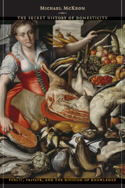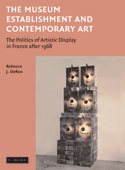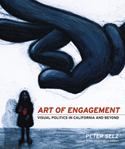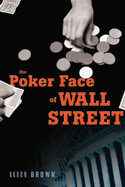|
||
      |
Peer Review ::
On the shelf
 Wise
Guy: The Life and Philosophy of Socrates, by M.D. Usher, AM’94,
PhD’97, Farrar, Straus & Giroux, Inc., 2005. With illustrations
by Los Angeles Times political cartoonist William Bramhall, Usher’s
Socrates primer mingles ancient sources and comic pictures, introducing
young readers to the great philosopher. Appropriate for ages eight and up.
Wise
Guy: The Life and Philosophy of Socrates, by M.D. Usher, AM’94,
PhD’97, Farrar, Straus & Giroux, Inc., 2005. With illustrations
by Los Angeles Times political cartoonist William Bramhall, Usher’s
Socrates primer mingles ancient sources and comic pictures, introducing
young readers to the great philosopher. Appropriate for ages eight and up.
Human Identity and Bioethics, by David DeGrazia, AB’83, Cambridge University Press, 2005. The intersection of biology and medical technology raises difficult questions. Should a “do not resuscitate” directive be followed if an individual is, in some sense, not the same person than when he or she made the decision? Are prenatal genetic interventions ever justifiable? Drawing on numerical and narrative theories of identity, DeGrazia elucidates these and other moral considerations.

The Secret History of Domesticity: Public, Private, and the Division of Knowledge, by Michael McKeon, AB’64, Johns Hopkins University Press, 2005. Examining the emergence of modern concepts of ‘public’ and ‘private’ during 17th- and 18th-century England, McKeon analyzes how literary as well as graphic and architectural forms reflected these divisions.
Buddhists, Brahmins, and Belief: Epistemology in South Asian Philosophy of Religion, by Dan Arnold, PhD’02, Columbia University Press, 2005. A cross-cultural study of Indian epistemology, religion, and philosophy, Arnold’s book engages both Buddhist and 20th-century language thought in an effort to shape contemporary philosophical debates.

The Museum Establishment and Contemporary Art: The Politics of Artistic Display in France after 1968, by Rebecca DeRoo, AM’94, PhD’00, Cambridge University Press, 2006. This work examines late 1960s French museum and artist communities, focusing on their responses to political protests of the time. DeRoo argues that museums failed to properly represent artists’ work and intentions and analyzes the political nature of the public consumption of art.
The Best-Kept Secret: Men’s and Women’s Stories of Lasting Love, by Janet Reibstein, AM’77, PhD’81, Bloomsbury, 2005. Because love between couples is an intimate, and therefore private affair, stories about lasting affection and marriage tend to be overlooked in favor of tragic divorce and infidelity tales. Reibstein presents the nuanced and intricate love lives of couples who have stayed together—happily—for nine years or more, and includes “Golden Rules” for enduring bliss.

Art of Engagement: Visual Politics in California and Beyond, by Peter Selz, AM’49, PhD’54, University of California Press, 2005. Covering a variety of media—from photographs to performance art—and artists, art critic and former curator at New York’s Museum of Modern Art Selz examines the production of political art in California since the 1940s, including works produced in response to September 11th and the war in Iraq.
Chuck Taylor, All Star: The True Story of the Man Behind the Most Famous Athletic Shoe in History, by Abraham Aamidor, AB’69, Indiana University Press, 2006. For years, his name has been scribbled on the label of Converse’s popular All-Star sneakers. Yet few know much about Chuck Taylor. Aamidor investigates the man behind the moniker and his journey from pro basketball player to the Sporting Goods Hall of Fame.

Diaper Free Before 3: The Healthier Way to Toilet Train and Help Your Child Out of Diapers Sooner, by Jill Lekovic, AB’93, Three Rivers Press, 2006. Using medical studies and other parenting literature, pediatrician and mother Lekovic challenges conventional potty-training wisdom and presents a plan to get your baby out of diapers as early as age two.
The Place of Families: Fostering Capacity, Equality, and Responsibility, by Linda C. McClain, AM’81, Harvard University Press, 2006. What role does family life play in creating engaged and self-governing citizens? Hofstra law professor McClain investigates the question through a feminist and liberal lens, addressing controversial legislation issues such as homosexual marriage, welfare policy, and reproductive freedom.

The Poker Face of Wall Street, by Aaron Brown, MBA’82, John Wiley & Sons, 2006. Brown investigates what poker players and Wall Street financiers can learn from one another, highlighting similarities and differences in risk, rationality, and reward.